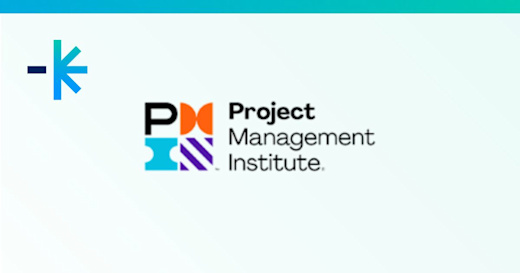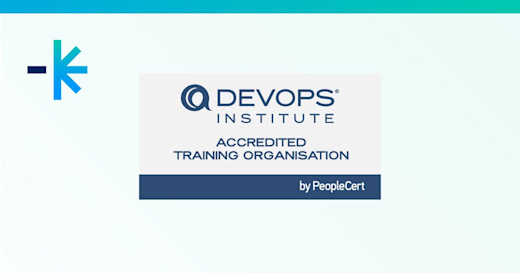With the constant emergence of new technologies and market needs, businesses can’t stick to the same ways forever. Adaptive skills and innovative minds are essential to remain industry and consumer-relevant.
Enterprise agility helps companies achieve just this; fostering an adaptive and transformative culture that benefits workers, customers, and shareholders alike. Its methods keep your business competitive and sustainable, future-proofing it in an ever-changing market landscape.
What is Enterprise Agility?
Enterprise agility is the skill with which organisations adapt to unforeseen circumstances. These include external factors such as evolving customer preferences or disruptive industry trends – as well as internal changes to your business environment.
It is a new, innovative way of working, allowing companies to adopt more dynamic practices while maintaining stability. The system offers plenty of benefits, including improved customer outcomes, inventive business approaches, and higher profit.
“Agility”, as a business term, can also apply to team-level perspective .
Team-level agility focuses on the collaboration and organisation of members in a given team. It addresses the ability to innovate and grow in their methods, based on feedback-driven exchanges between members without the guidance of outside sources.
Enterprise-level agility, on the other hand, is an entire company’s ability to respond efficiently to industry, workplace, or customer change. Developments made are applied at an organisational scale, rather than on small sub-sects of a business.
The Importance of Enterprise Agility in a Business
Organisations need enterprise agility to maintain their competitive edge, helping them evolve alongside market trends and developments.
Consumer demands and the modern workplace continuously experience growth, driven by new technologies, customer preferences and employee expectations. Businesses will constantly experience disruption from market innovators such as start-up organisations; and other entities that develop new ways of competing.
Start-ups, for example, have learned to tap into niche – yet lucrative – markets, applying a “customer-first” approach with new technologies. This practice has since allowed them to compete at scale with larger corporations.
Customer demands also develop throughout the years, as individuals grow more interconnected than ever. The rise of social media and e-commerce has bolstered efficiency in the customer service sector, making products and services available through the click of a mouse. Thus, customers now have a rising desire for more personalised services tailored to their experience.
Companies must therefore learn to re-prioritise and re-model their existing methods to keep up with such trends. Enterprise agility not only enables this, but offers plenty of positive business outcomes in turn.
Benefits of Enterprise Agility
Enterprise agility results in two leading business benefits: improved customer outcomes and employee engagement.
The ability to rapidly respond to changing consumer needs helps your company deliver its best services according to the current market landscape. Learning to adopt modern practices and innovative technology use can keep you ahead of the curb, maintaining growth and profits for your business.
In fact, a study by MIT discovered that companies who follow enterprise agility principles grow 37% faster in revenue and generate 30% higher profits.
Additionally, agile methods improve a business’ internal operations. IBM research shows that the top three benefits for business owners include improved management of changing priorities (cited by 71% of respondents), greater project visibility (66%), and better alignment between business and IT requirements (65%).
These advantages make enterprise agility a much-needed system for any organisation, leading to better internal and external business practices.
The Core Principles of Enterprise Agility
An enterprise is considered to have long-term agility when possessing the following features:
Adaptability
Adaptability refers to the skill at which a company re-models its existing methods to compete and cater to changing market or workplace trends.
To achieve this, developments may be made to the current management, technology, resources, and communication systems of a business.
Flexibility
To be agile and adaptive, flexibility is a mandatory business trait.
This principle goes hand-in-hand with adaptability, as it refers to the ease at which a business reshapes itself, while still maintaining its core objectives. In a flexible business, there is a loose hierarchical structure and acceptance of new approaches and ways of thinking.
Balance
Finally, we have balance.
With enterprise agility, organisations will learn to balance both control and autonomy among their workers. Achieving proper balance gives employees the freedom to innovate and approach their tasks through dynamic skills, while still adhering to core business goals.
How to Implement Enterprise Agility in Your Business
For enterprise agility to work in a business, all employees must learn to adopt its principles. Workers must leave behind traditional methods of “failure avoidance” or “predictability” and embrace innovative and creative thinking.
Change, of course, starts at the top. Leaders must first learn to adapt their behaviours and reprioritize, helping workers to then follow suit. This may involve further training and coaching to help them develop new ways of working. Whether you’re a start-up or a large-scale corporation, the following practices must be established to achieve an agile enterprise
Self-organisation: Workers must be provided with flexible roles that enable them to apply their skills independently. Encourage them to tap into their full skills potential, fostering creative ideas and initiative.
Collaboration: Remove any barriers to efficient communication, ensuring all workers can reach out and share information as quickly and easily as possible. In software development teams, for example – physical co-location is implemented, allowing workers to collaborate closely with one another.
Autonomy: Lastly, provide your teams with the independent authority to make their decisions. This helps achieve greater team efficiency and productivity as they develop their optimal methods of collaborating and producing results. Instead of training managers to direct and set restrictions, teach them to guide and support team progress.
Enterprise Agility with AgileSHIFT
Think your business could use more agility?
AgileSHIFT® training helps companies and their employees embrace the need for organisational transformation. This is a 2-day program that aims to equip individuals with a thorough understanding of agile working methods, the tools and techniques involved, and how to apply them throughout the entire business structure.
Course training will ultimately culminate in a 45-minute, multiple choice exam (included in the pricing, with practice exam papers provided).
AgileSHIFT offers its own unique framework, principles, and delivery approach, while helping students understand the importance of enterprise agility; new, adaptive ways of thinking; and forming a culture of these practices in the workplace.
For CEOs and managers of all types, the AgileSHIFT course can help you achieve the business growth, development, and innovative creation you’re after. This training is industry-recognised by groups such as the Project Management Institute and the Australian Institute of Project Management. To spur that transformational change you need, get in contact with Lumify Work today.










